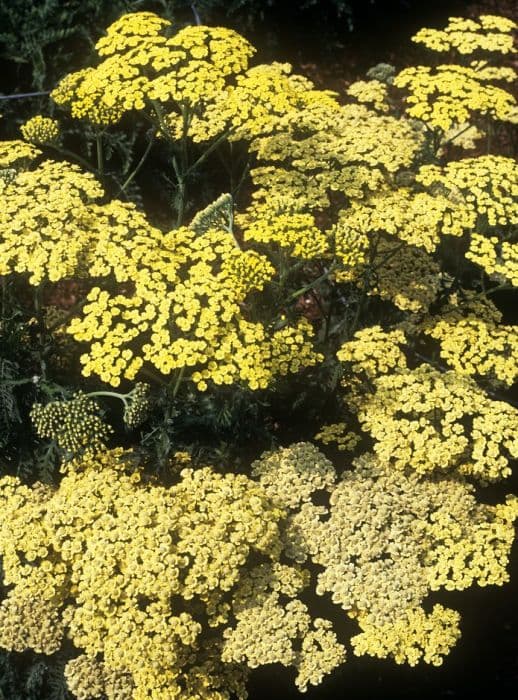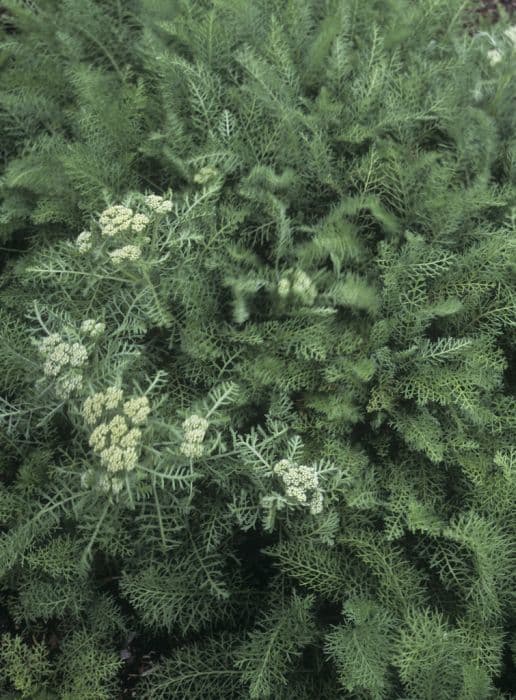Beggar Ticks Bidens aurea

ABOUT
Bidens aurea, commonly known as Apache Beggarticks, is a visually striking plant known for its bright and cheery blooms. It displays lush green foliage that serves as a backdrop to a prolific display of flowers. The leaves are opposite, often with pointed tips and serrated edges, forming a textured green canvas across the branches. The distinctive characteristic of the Apache Beggarticks is its captivating flowers, which boast a golden-yellow hue. The blossoms are typically daisy-like in form, with a central disk that may darken as it matures, surrounded by slender, delicate ray florets that extend outward like the sun's rays. These flowers come together in clusters, creating a vibrant and full display that can add a splash of sunshine to any garden. This plant often has a bushy appearance, with stems that branch out readily, creating a dense and leafy habit. Its overall presence is graceful yet robust, with a natural ability to attract a variety of pollinators such as bees and butterflies, thanks to its nectar-rich blooms. In summary, the Apache Beggarticks is a charming and floriferous plant, recognized for its abundant yellow flowers that light up its foliage with a lively and inviting display.
About this plant
 Names
NamesFamily
Asteraceae.
Synonyms
Beggar-ticks, Water Marigold, Apache Beggarticks, Stickseeds, Burr Marigolds.
Common names
Bidens heterodoxa, Bidens odorata, Coreopsis leucantha, Kerneria aurea, Bidens pilosa var. calcicola, Bidens ferulifolia.
 Toxicity
ToxicityTo humans
Beggar-ticks (Bidens aurea) is not widely known for its toxicity to humans. There is limited information suggesting that this plant poses significant toxic risks when ingested by humans. However, like many plants, it could potentially cause mild stomach upset or allergic reactions in some individuals. It's generally advisable to avoid ingesting plants that are not commonly recognized as food, as they may have unpredictable effects.
To pets
Similar to its effects on humans, Beggar-ticks (Bidens aurea) is not well-documented as a toxic plant to pets. It is not listed among commonly recognized poisonous plants for animals such as dogs and cats. Nonetheless, ingestion of non-food plants can sometimes result in mild gastrointestinal distress in pets, presenting symptoms like vomiting or diarrhea. Care should be taken to prevent pets from consuming plants not specifically intended for them.
 Characteristics
CharacteristicsLife cycle
Perennials
Foliage type
Deciduous
Color of leaves
Green
Flower color
Yellow
Height
2-3 feet (60-90 cm)
Spread
2 feet (60 cm)
Plant type
Herb
Hardiness zones
9
Native area
Mexico Central America
Benefits
 General Benefits
General Benefits- Attracts Pollinators: Bidens aurea, commonly known as beggarticks, is known to attract bees, butterflies, and other beneficial insects, supporting biodiversity.
- Ornamental Value: Beggarticks have daisy-like flowers that add aesthetic appeal to gardens and landscapes.
- Erosion Control: The root system of Bidens aurea can help stabilize soil, reducing erosion on slopes and banks.
- Low Maintenance: Beggarticks generally require minimal care once established, making them suitable for low-maintenance gardening.
- Drought Tolerance: Once established, it can tolerate periods of drought, which is beneficial in arid or water-restricted areas.
- Rapid Growth: Beggarticks can grow quickly, providing fast coverage and bloom in suitable conditions.
- Edibility: Some parts of the plant are edible and can be used in salads or as a garnish, contributing to culinary uses.
- Companion Planting: Beggarticks can be used in companion planting to benefit surrounding plants by attracting pollinators and potentially deterring pests.
- Wildlife Habitat: It provides a habitat and food source for wildlife, particularly insects and some bird species.
 Medical Properties
Medical Properties- Anti-inflammatory: Bidens aurea has been traditionally used for its anti-inflammatory properties, potentially helping to reduce inflammation in various conditions.
- Antiseptic: It may possess antiseptic qualities that could be beneficial for sterilizing and cleaning wounds.
- Diuretic: The plant has been used traditionally as a diuretic, helping to increase the passing of urine.
- Immunomodulatory: There have been suggestions that the plant could possibly influence the immune system, although detailed studies are lacking.
 Air-purifying Qualities
Air-purifying QualitiesThis plant is not specifically known for air purifying qualities.
 Other Uses
Other Uses- The Bidens aurea, commonly known as golden tickseed, can be used as a natural dye for fabrics, providing a range of golden hues to textiles.
- The plant may offer an ecological benefit by attracting pollinators such as bees and butterflies, which aids in promoting biodiversity in gardens.
- Golden tickseed can be utilized as a living mulch to suppress weeds and conserve soil moisture when planted densely in garden beds.
- Its vibrant flowers can be used as a natural colorant for foods and cosmetics, although this is not a common practice.
- When decomposed, the plant material can serve as a green manure, enriching the soil with organic matter and nutrients.
- Golden tickseed may be used in floral arrangements, providing a bright and long-lasting addition to bouquets.
- The stems and foliage can be incorporated into crafting and basket weaving as a natural and biodegradable option.
- Some cultures might use the petals of golden tickseed to create eco-friendly confetti or decorative elements for festivals.
- The plant's natural resilience and rapid growth make it a suitable choice for erosion control on slopes and banks.
- In permaculture design, Bidens aurea could be planted as part of an insectary garden to attract beneficial insects that control garden pests.
Interesting Facts
 Feng Shui
Feng ShuiThe Beggar Ticks is not used in Feng Shui practice.
 Zodiac Sign Compitability
Zodiac Sign CompitabilityThe Beggar Ticks is not used in astrology practice.
 Plant Symbolism
Plant Symbolism- Attraction and Persuasiveness: Bidens aurea, commonly known as beggarticks, often symbolizes the ability to attract good things and persuade others, much like its seeds that stick to animals and humans for dispersal.
- Resilience and Survival: As the beggarticks plant can thrive in various conditions and easily propagate, it represents resilience and the ability to survive and adapt in different environments.
- Caution and Awareness: The propensity of beggarticks to cling can remind one to be cautious of what they allow to attach to themselves, be it habits or associations, and to remain aware of their surroundings.
 Water
WaterThe common name for Bidens aurea is goldeneye, and it should be watered thoroughly, allowing the soil to dry out somewhat between waterings. During the growing season, goldeneye generally needs watering once a week, with about 1-2 gallons depending on the size of the plant and the weather conditions. In hot or windy weather, you might need to water more frequently. Cut back on water in the winter months when the plant is not actively growing. Ensure the water penetrates deeply into the soil rather than just wetting the surface.
 Light
LightGoldeneye thrives in full sunlight to light, dappled shade. The best spot for this plant would be in a garden area that receives at least 6 hours of direct sunlight each day. Avoid placing your goldeneye in deep shade, as this can lead to poor flowering and a leggy growth habit.
 Temperature
TemperatureGoldeneye plants are best suited to a mild climate and prefer average temperatures between 60°F and 75°F. They can tolerate minimum temperatures down to around 32°F, but frost can damage the foliage. Their maximum temperature tolerance is around 90°F, beyond which they may require additional watering and shading to prevent stress.
 Pruning
PruningPruning goldeneye is important for encouraging bushier growth and more abundant flowering. Prune lightly during the spring to remove any dead or damaged branches and to shape the plant. Deadheading, or removing spent flower heads, can be done regularly throughout the blooming season to promote continuous flowering.
 Cleaning
CleaningAs needed
 Soil
SoilBeggar-ticks (Bidens aurea) thrive in a well-draining soil mix with a slightly acidic to neutral pH, optimally between 6.0 to 7.0. A mix containing loamy soil, peat, sand, and compost would create a fertile base for this plant. Adequate organic matter will help retain moisture while preventing waterlogging.
 Repotting
RepottingBeggar-ticks should be repotted every 1-2 years or when it has outgrown its current pot. This helps to refresh the soil, provide more space for growing roots, and remove any potential buildup of salts or minerals that could affect the plant's health.
 Humidity & Misting
Humidity & MistingBeggar-ticks prefer moderate to high humidity levels. Maintaining a humidity level of around 50% is ideal for this plant to thrive. It is adaptable to normal room humidity but benefits from increased moisture in the air.
 Suitable locations
Suitable locationsIndoor
Place Beggar-ticks in bright indirect light and keep moist.
Outdoor
Plant Beggar-ticks in full sun to partial shade; water regularly.
Hardiness zone
8-11 USDA
 Life cycle
Life cycleBidens aurea, commonly known as Beggar Ticks, starts its life cycle with seed germination, which typically occurs in the spring when soil temperatures warm sufficiently. Seedlings emerge and develop into juvenile plants with characteristic opposite leaves. As the plant matures, it enters the vegetative stage wherein it grows rapidly, producing more leaves and stems. The transition to the reproductive stage follows, marked by the development of bright yellow flowers capable of attracting pollinators during the late summer and fall. After pollination, the flowers produce fruits which are achenes with barbed awns that can stick to animals and fur, aiding in seed dispersal. The plant completes its life cycle when these seeds eventually drop to the ground, overwinter, and germinate to start a new generation.
 Propogation
PropogationPropogation time
Spring-early summer
The most popular method of propagation for Bidens aurea, commonly known as golden tickseed, is through seed. The best time for sowing is in late winter to early spring, as the seeds require a period of cold to break their dormancy, a process known as stratification. Sowing the seeds should be done in well-draining soil, covering them lightly with no more than 1/8 inch (around 3 mm) of soil. The soil should be kept moist but not waterlogged. Once the seeds have germinated and the seedlings are large enough to handle, they can be transplanted to their final location in the garden. Seed propagation is a simple and cost-effective way to produce many plants from a single parent plant.









